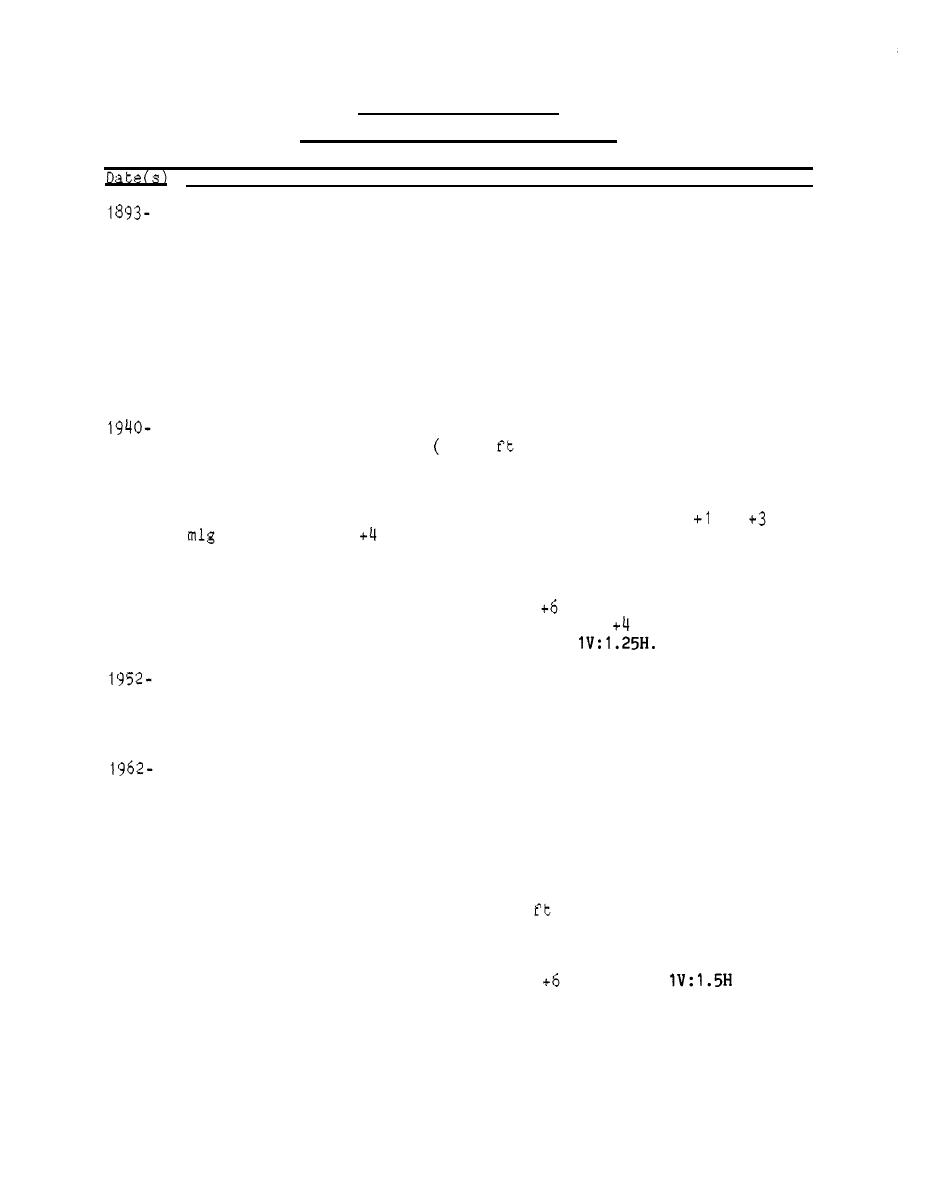
Table 1
0
Calcasieu Pass Jetties
Calcasieu River and Pass, Louisiana
Construction and Rehabilitation History
Two jetties were constructed at Calcasieu Pass to secure a 12- by
1905
200-ft channel (Figure 21). The method of construction was similar
to that for the Sabine Pass Jetties which consisted of stone placed
on a foundation mattress of brush. The east jetty was built during
1893-1897 to a length of 7,850 ft, and the west jetty was built
during 1896-1900 to a length of 3,200 ft. By 1899, both jetties had
been badly damaged by storms which displaced about 3,000 tons of
granite capping blocks. During 1904-1905 the jetties were repaired,
and the east jetty was extended 600 ft seaward. This work required
21,000 tons of riprap stone, 5,000 sq yd of mattress, and resetting
52 granite capping stones.
In 1940 the west jetty was repaired and extended 2,600 ft seaward
1942
apart). During 1941-1942
parallel to the east jetty 1,000
approximately 220,000 tons of stone was used in repairing the east
jetty and to the -10-ft mlg contour, extending the east and west
jetties 2,000 and 2,325 ft, respectively, to the 10-ft mlg contour.
Prior to improvements, center-line elevations were from
to
ft
and from -2 to
ft mlg on the east and west jetties,
respectively. The design sections (Figure 21, inset) for the extens-
ions employed 5- to 10-ton cover stone and 25-lb to 4-ton core stone
and were placed atop fascine mats ballasted with riprap. The east
jetty was to have a crown elevation of
ft mlg and a crown width of
1 ft. Similar values for the west jetty were
ft mlg and 1 ft,
5
0
respectively. The design side slopes were
Center-line surveys, taken in 1952 and 1960, show a general settle-
ment of up to 2 ft on the east jetty and 1 to 2 ft on the west
1960
jetty. The 1952 elevations were at, or slightly above, the design
elevations used in the 1940-1942 improvements.
Both jetties were repaired, with most of the work carried out on
their landward and seaward ends. At their seaward ends, 1,500 ft of
1963
the west jetty and 300 ft of the east jetty were repaired with 6- to
10-ton stone. An 800-ft-long section near the landward end of the
the repair sections was identical to that used on the 1940-1942
extensions. Cost of the repair was ,500using 5,000 tons of
riprap and 4,000 tons of armor stone. Subsequent to this work,
additional repairs were made to 1,150
of the landward end of the
east jetty (including the previous repair area) and on the west
jetty. Two sections totaling 215 ft were repaired, and the landward
end was extended 50 ft (tie-in). The east jetty repair geometry
consisted of a crown width of 1 ft at
ft mlg and
0
(Continued)
50



 Previous Page
Previous Page
